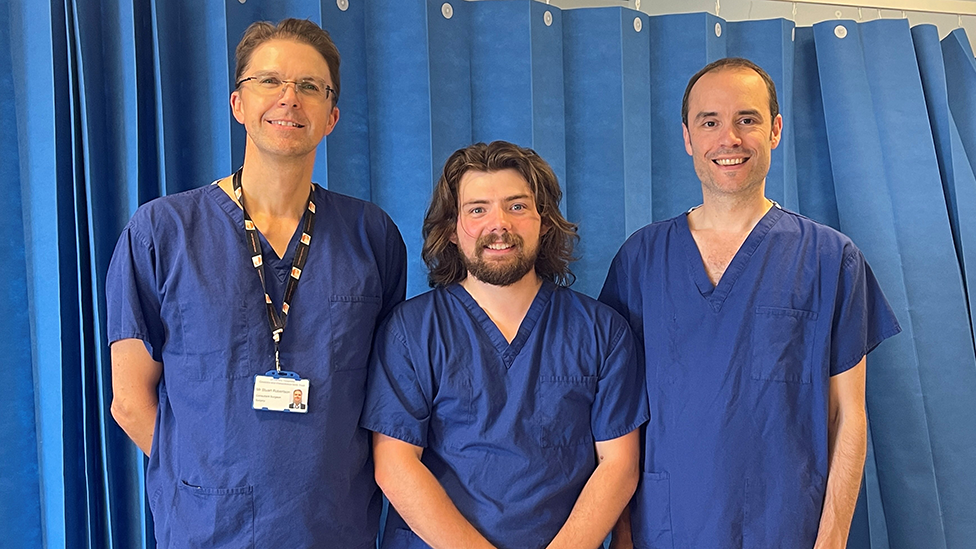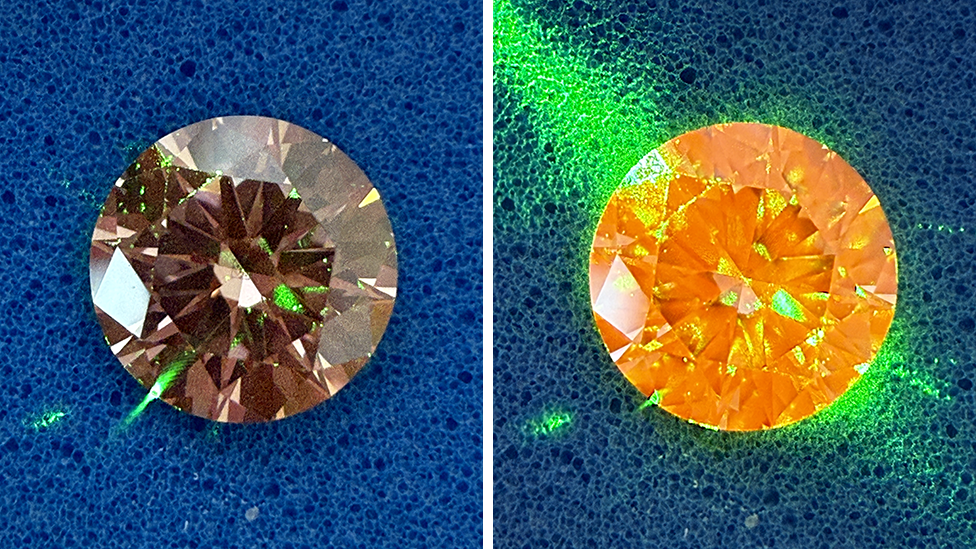Diamond sensor could be cancer 'game-changer'

Alex Newman (centre) said there was demand for a non-toxic way of tracking cancer
- Published
Researchers at the University of Warwick have developed a new diamond-based sensor that they said could be a "game-changer" in detecting the spread of tumours.
The team said the new non-toxic and non-radioactive device was "ultra sensitive" and used the "unique properties of diamonds to diagnose metastasised breast cancer".
Metastasis is the process by which cancer spreads through a person's body - usually through lymph nodes.
The diamond sensor works by detecting a magnetic tracer fluid injected into a patient during or before breast cancer surgery. Researches said the sensor could then "locate the tracer fluid and pinpoint the lymph nodes to be surgically removed to stop the cancer spread".
The research was published in the Physical Review Applied journal, with the device developed with the help of staff at University Hospitals Coventry and Warwickshire.
First author Alex Newman, a PhD student in the Department of Physics at the University of Warwick said there was a demand for a "versatile non-toxic means of finding cancer".

Diamonds contain colour centres that allow it to detect small changes in magnetic field
"For this new diamond-based sensor, we managed to get the size of the sensor head down to just 10 mm, which means it is the first diamond sensor to be able to detect magnetic tracer fluid while being small enough for endoscopic use and keyhole surgery," he said.
"It is also very sensitive, capable of detecting one hundredth of the typical full clinical dose of magnetic tracer fluid."
Prof Gavin Morley, senior author and group leader in the department, said diamonds could sense magnetic fields "thanks to colour centres in the diamond, called nitrogen vacancy centres".

The sensor head is just 10mm, making it suitable for endoscopic use and keyhole surgery, the team said
The university said while tracing cancers was not new, it has traditionally been achieved by using radioactive substances, which not every hospital is able to handle, or by the use of a blue dye, which causes an allergic reaction in about one out of 100 cases.
It added that the use of magnetic tracer fluids was already becoming more widespread, but its new diamond device could provide a smaller, more sensitive sensor and eliminated the need for bulky electronics.
Researchers said there could also be benefits for other patients, particularly those with lung, liver, colorectal and oesophageal cancers.
Get in touch
Tell us which stories we should cover in Warwickshire
Follow BBC Coventry & Warwickshire on BBC Sounds, Facebook, external, X, external and Instagram, external.